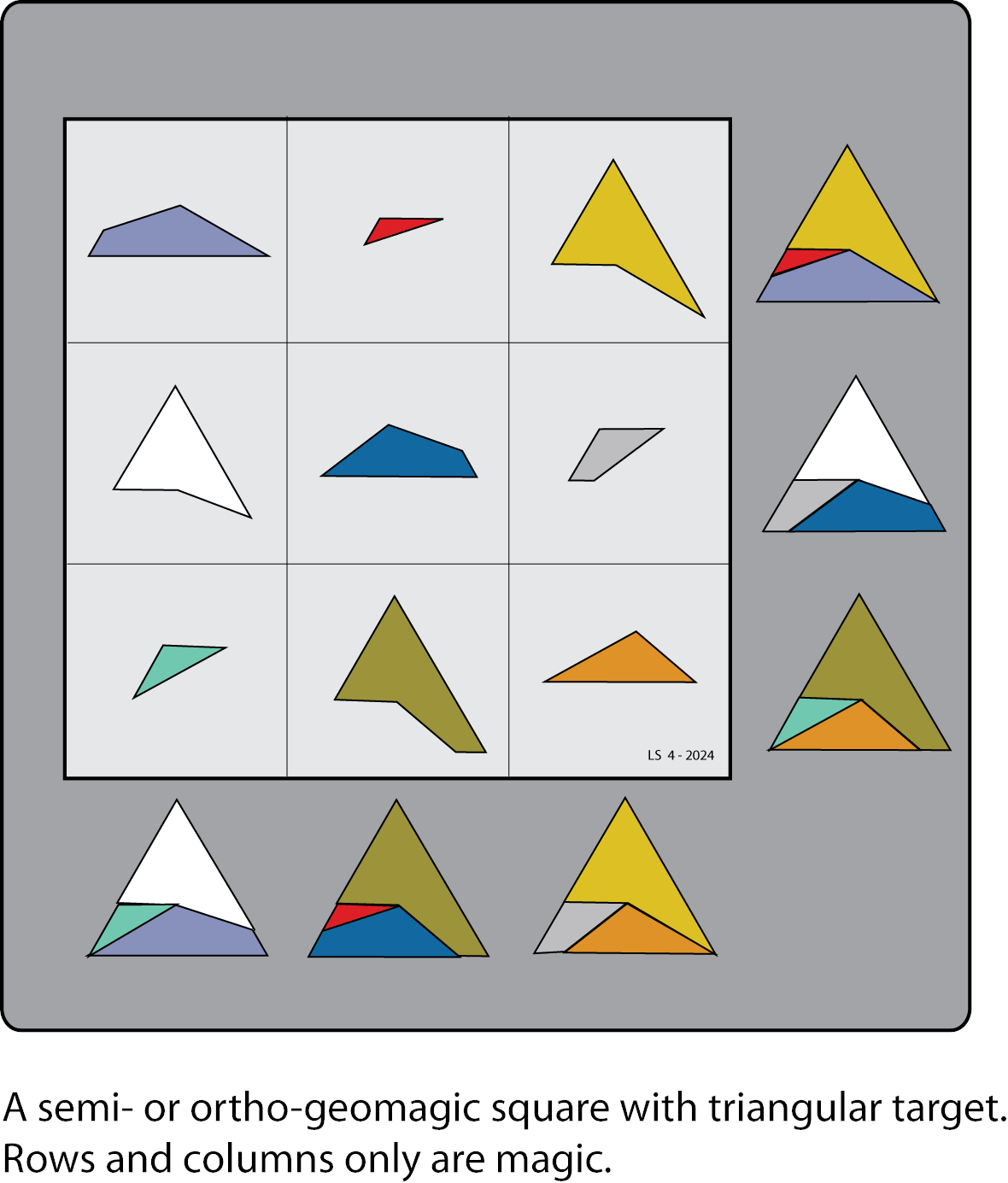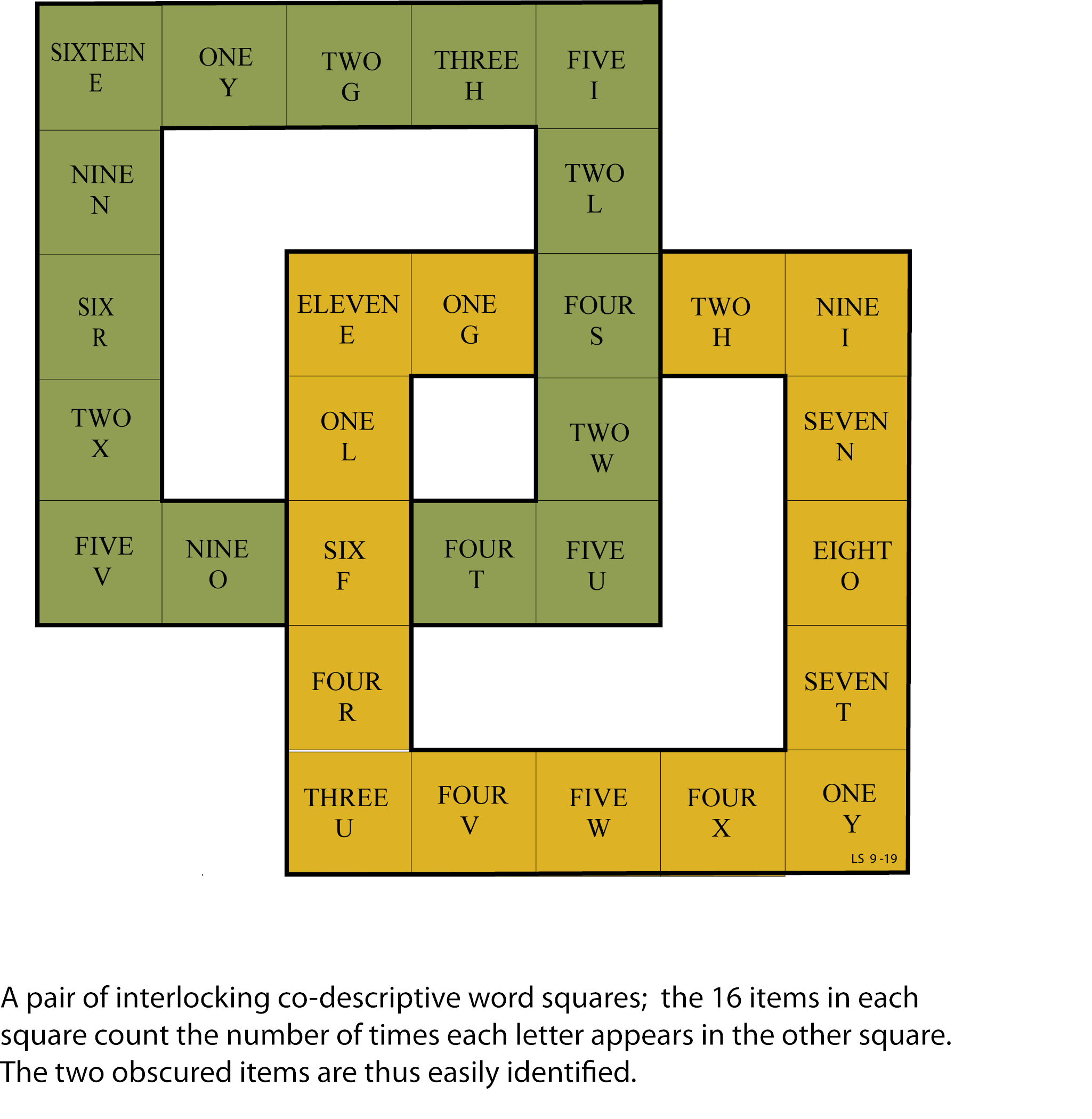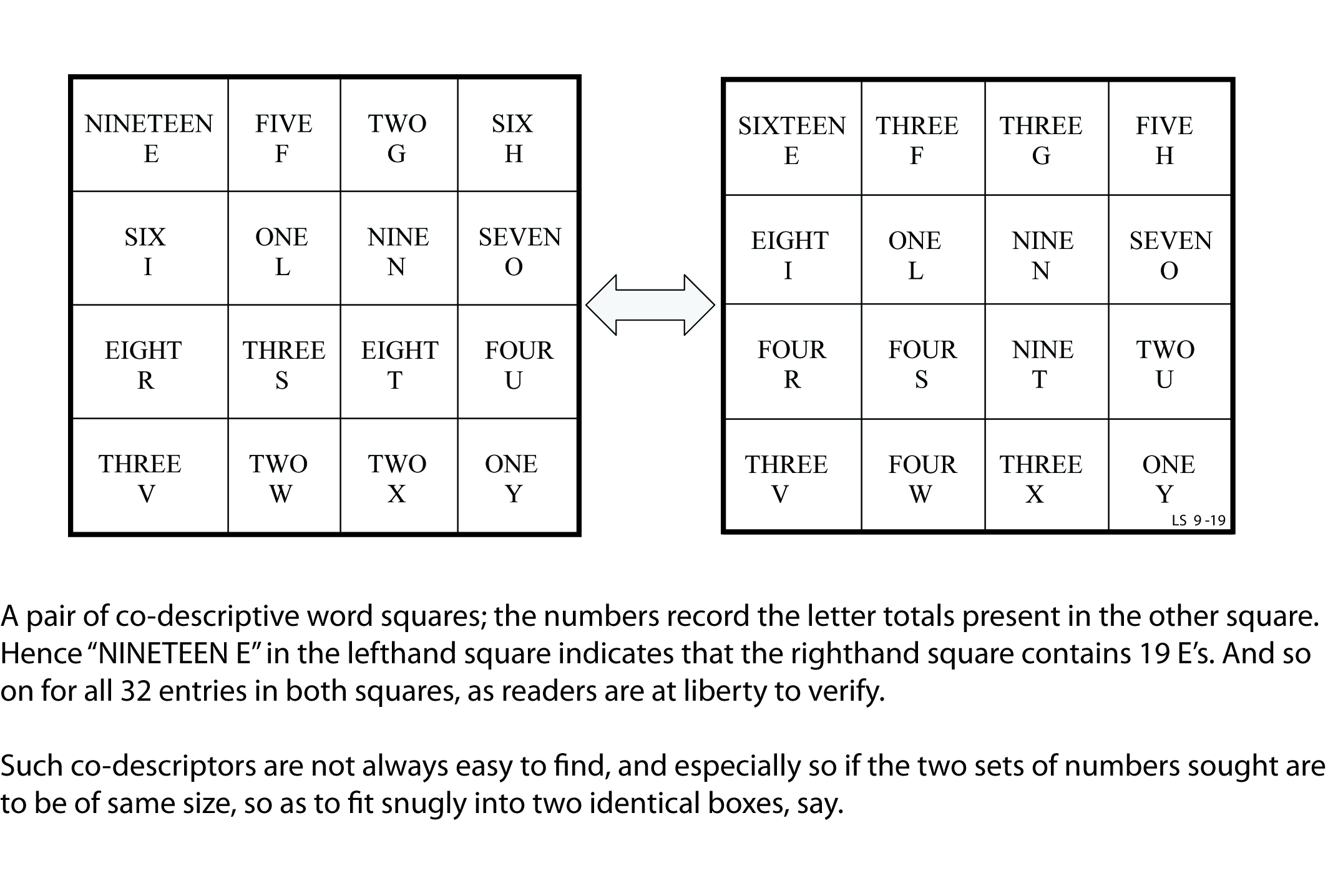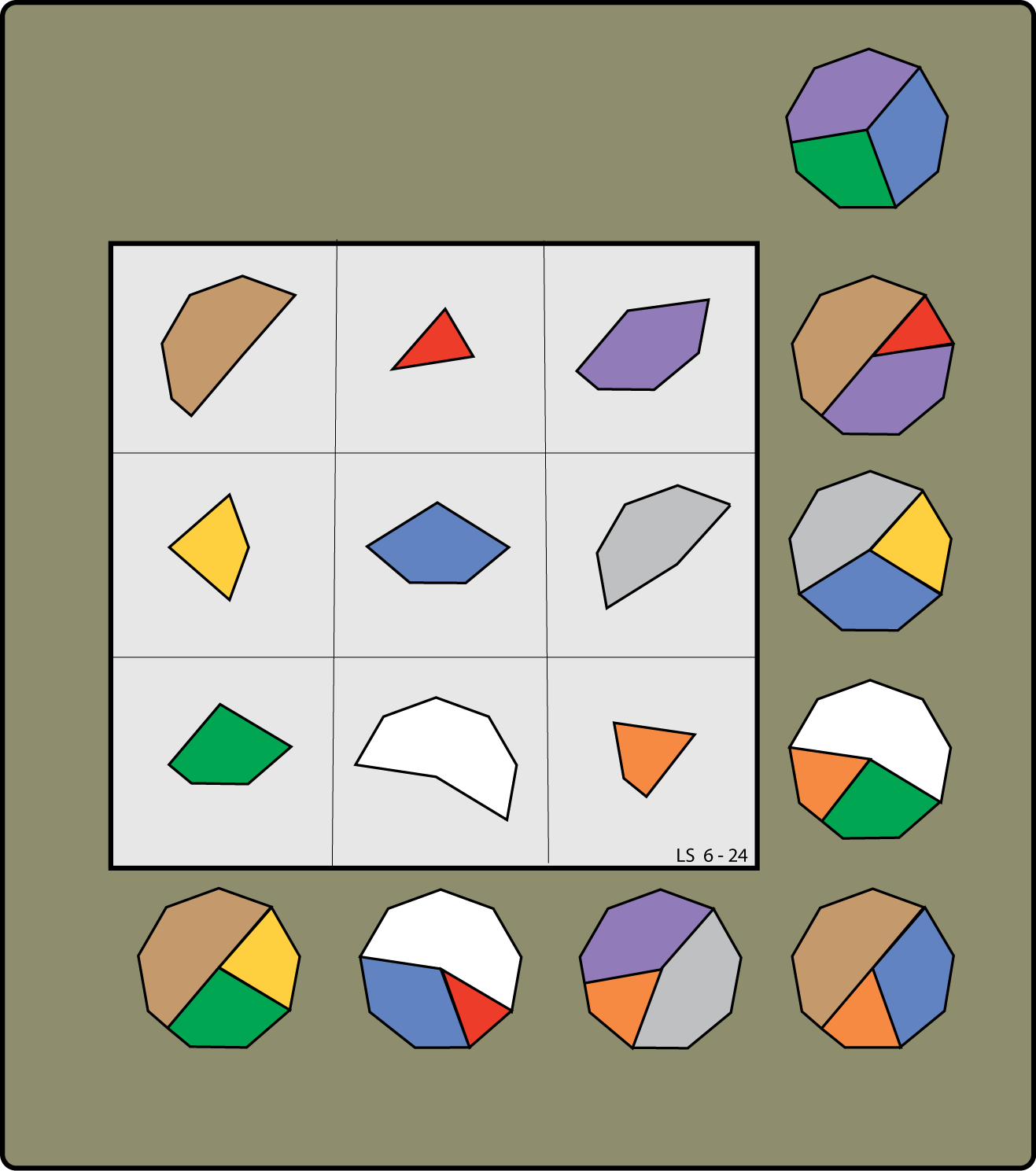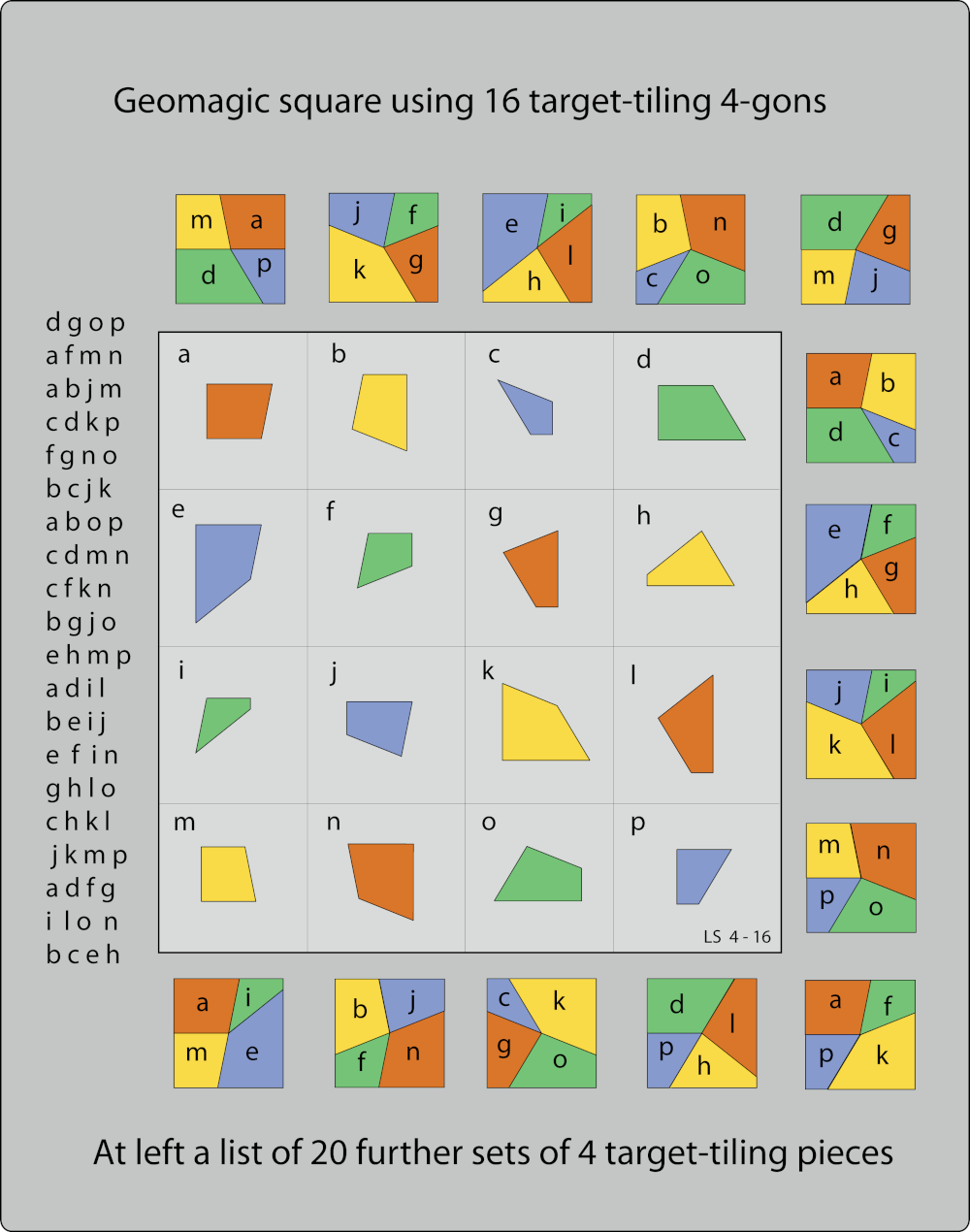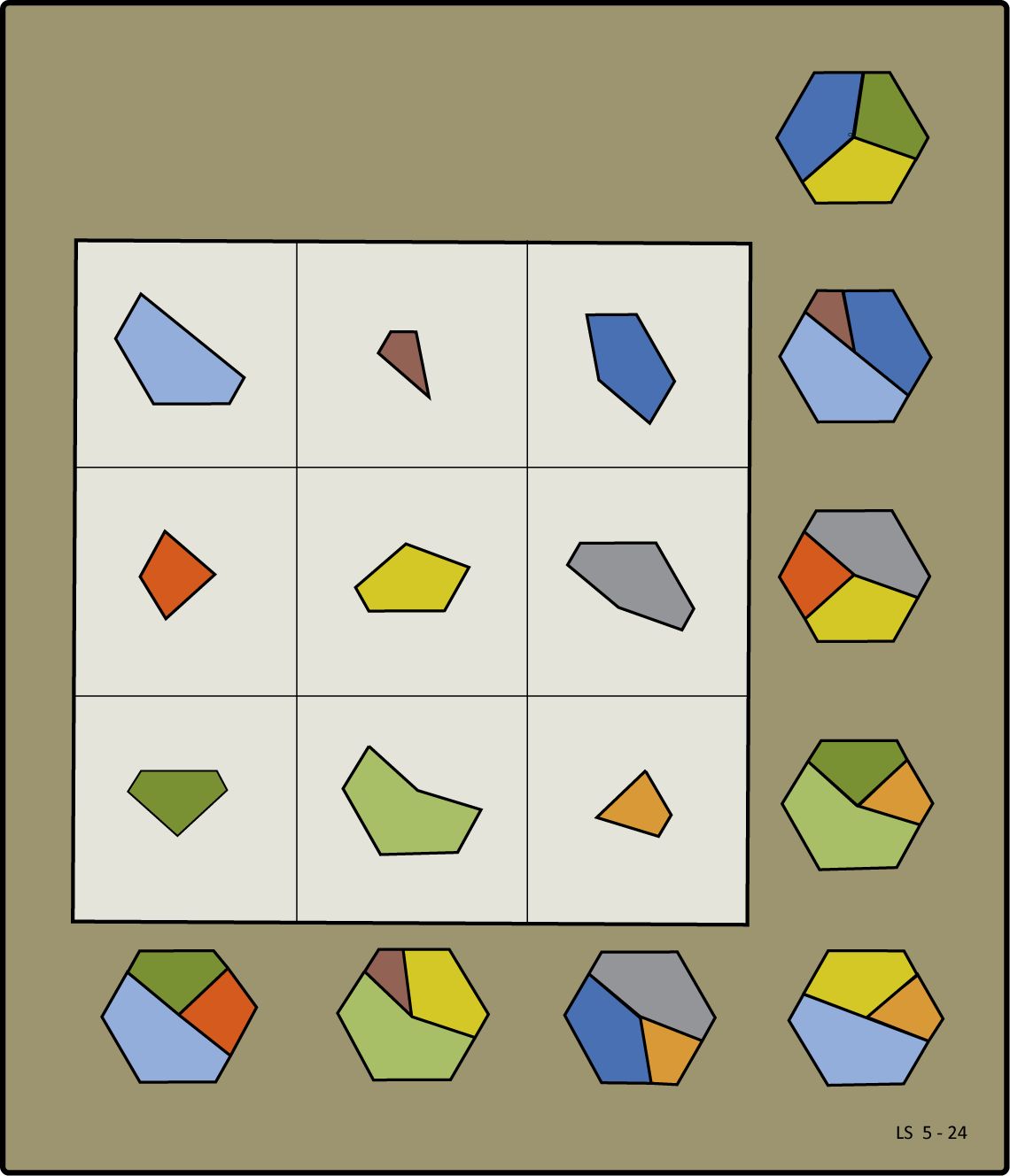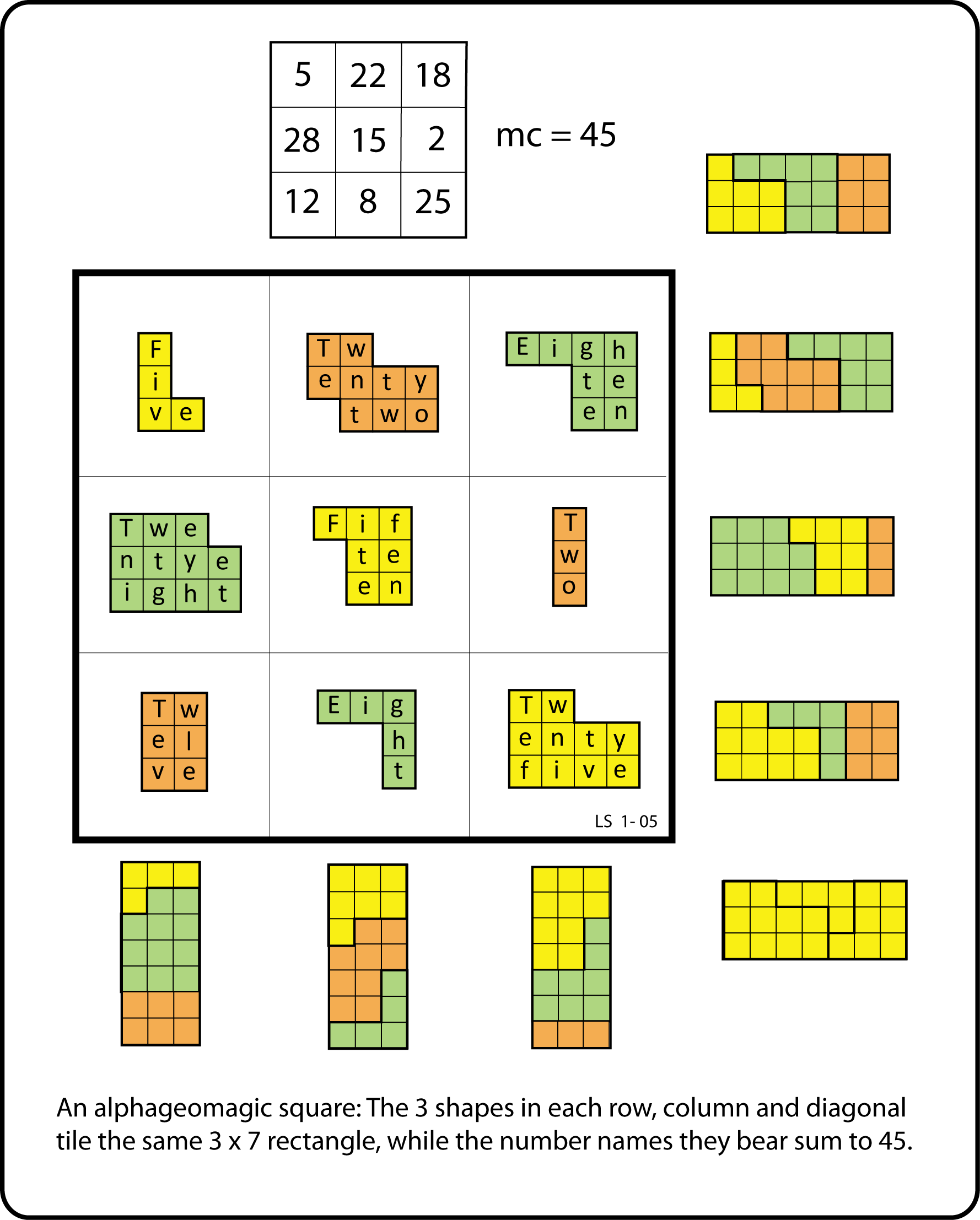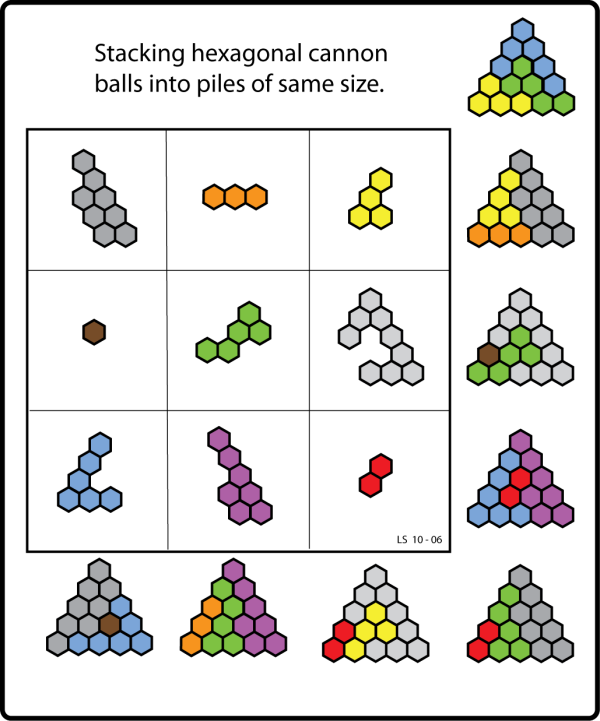Search Results for: lee sallows
Interlocking Squares
Quantum Entanglement
More Geomagic
4-Gon Conclusion
Reciprocity Redux
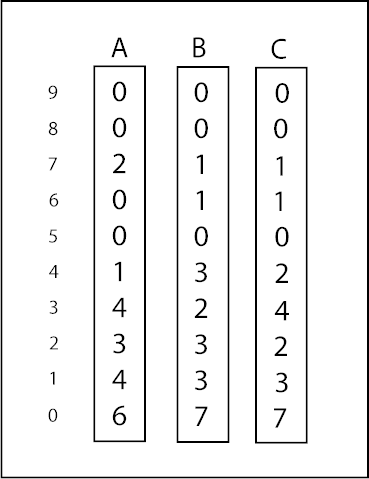
From Lee Sallows:
“The above three strips of ten numbers have an intriguing property. They record how many times each of the decimal digits (shown at left) occur in the other two strips. Hence the 6 in the left-hand strip identifies the number of 0’s in strips B and C, while the 2 in the centre strip counts the number of 3’s present in strips A and C. Moreover, the same property holds for every number in all three strips.”
See Reciprocation.
(Thanks, Lee.)
Magic Square Hereabouts
From Lee Sallows:
A feature common to many geomagic squares is that the set of shapes they employ reveal an atomic structure. That is, they are built up from repeated copies of a single unit shape. Examples of this are piece sets composed of polyominoes, the unit shape then being a (relatively small) square.
For the would-be geomagic square constructor, a key advantage of the atomic property is that the shapes concerned are each describable in terms of the positions of their constituent atoms. Or, to put it another way, they can be represented by a set of numbers. Hence, unlike non-atomic shapes, they are readily amenable to analysis and manipulation by computer.
Take, for example, an algorithm able to identify and list each of the different ways in which a given planar shape can be tiled by some specified set of smaller shapes. Such a program might be challenging to write, but provided the pieces concerned are composed of repeated units, implementation ought to be straightforward. But could the same be said in the case of non-atomic pieces? Without a set of numbers to describe piece shapes, how are they to be represented in a digital computer?
This is worth noting since, as inspection will show, the shapes employed in the square above are plainly non-atomic. In line with this I can confirm that the only computer program involved in deriving this solution was a vector graphics editor used to create the drawing seen above.
(Thanks, Lee.)
Perfect Numbers
From Lee Sallows:
As the reader can check, the English number names less than “twenty” are composed using 16 different letters of the alphabet. We assign a distinct integral value to each of these as follows:
E F G H I L N O R S T U V W X Z 3 9 6 1 -4 0 5 -7 -6 -1 2 8 -3 7 11 10
The result is the following run of so called “perfect” numbers:
Z+E+R+O = 10 + 3 – 6 – 7 = 0 O+N+E = –7 + 5 + 3 = 1 T+W+O = 2 + 7 – 7 = 2 T+H+R+E+E = 2 + 1 – 6 + 3 + 3 = 3 F+O+U+R = 9 – 7 + 8 – 6 = 4 F+I+V+E = 9 – 4 – 3 + 3 = 5 S+I+X = –1 – 4 + 11 = 6 S+E+V+E+N = –1 + 3 – 3 + 3 + 5 = 7 E+I+G+H+T = 3 – 4 + 6 + 1 + 2 = 8 N+I+N+E = 5 – 4 + 5 + 3 = 9 T+E+N = 2 + 3 + 5 = 10 E+L+E+V+E+N = 3 + 0 + 3 – 3 + 3 + 5 = 11 T+W+E+L+V+E = 2 + 7 + 3 + 0 – 3 + 3 = 12
The above is due to a computer program in which nested Do-loops try out all possible values in systematically incremented steps. The above solution is one of two sets coming in second place to the minimal (lowest set of values) solution seen here:
E F G H I L N O R S T U V W X Z –2 –6 0 –7 7 9 2 1 4 3 10 5 6 –9 –4 –3
But why does the list above stop at twelve? Given that 3 + 10 = 13, and assuming that THREE, TEN and THIRTEEN are all perfect, we have T+H+I+R+T+E+E+N = T+H+R+E+E + T+E+N. But cancelling common letters on both sides of this equation yields E = I, which is to say E and I must share the same value, contrary to our requirement above that the letters be assigned distinct values. Thus, irrespective of letter values selected, if it includes THREE and TEN, no unbroken run of perfect numbers can exceed TWELVE. This might be decribed as a formal proof that THIRTEEN is unlucky.
But not all situations call for an unbroken series of perfect numbers. Sixteen distinct numbers occur in the following, eight positive, eight negative. This lends itself to display on a checkerboard:
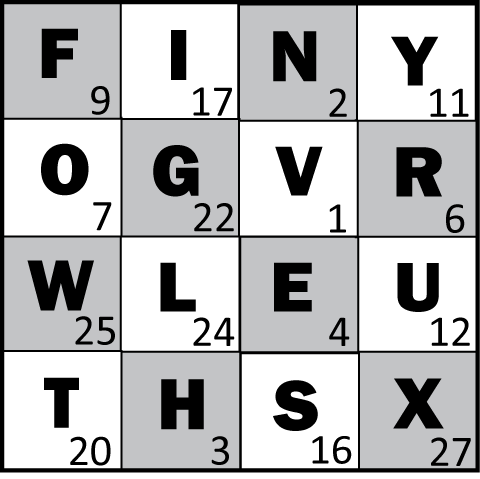
Choose any number on the board. Call out the letters that spell its name, adding up their associated numbers when on white squares, subtracting when on black. Their sum is the number you selected.
(Thanks, Lee.)

